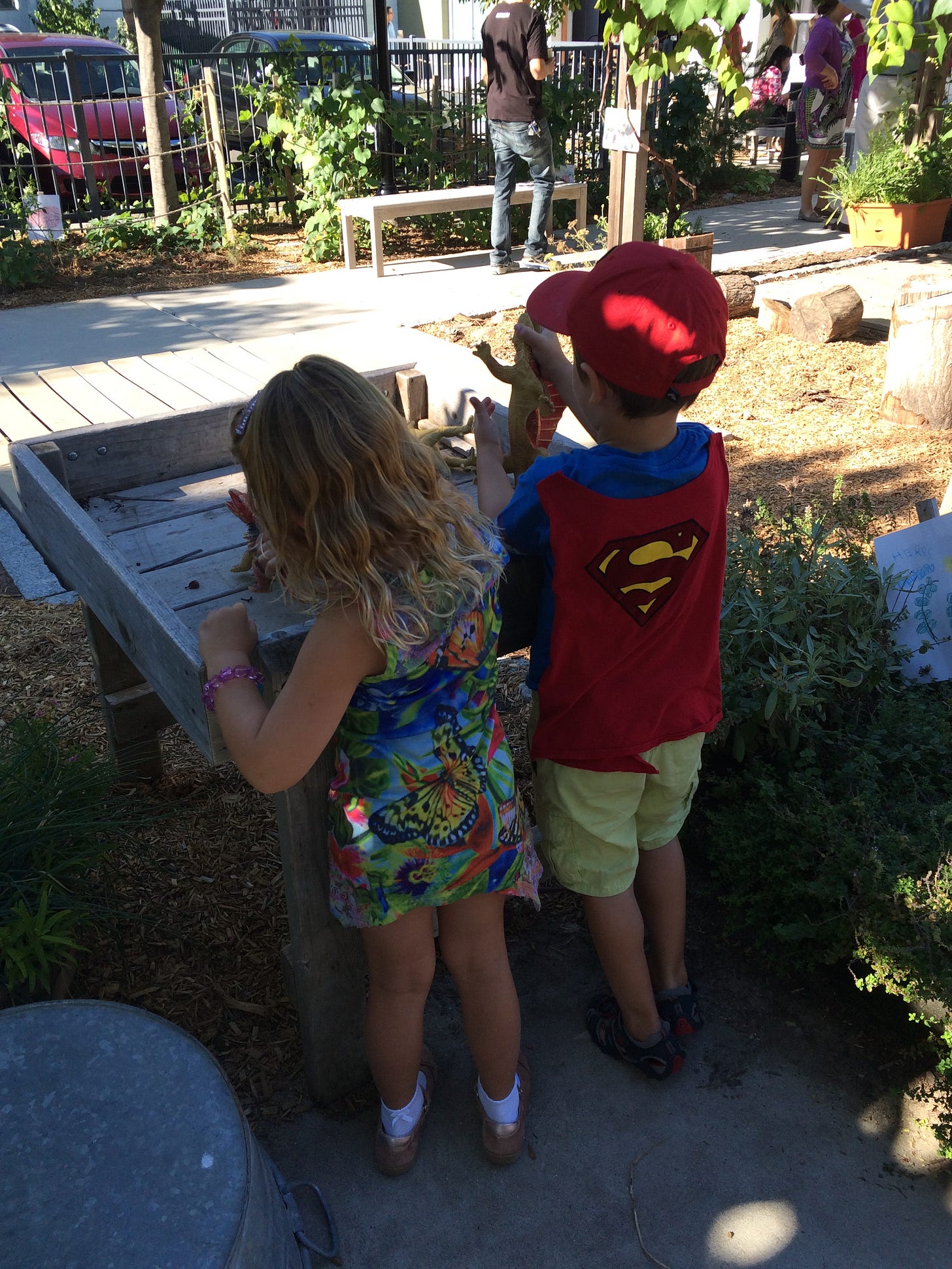Ripples of Change: Tracking Impact Beyond the Surface
How might we find ways to capture and convey hard to measure things?
Thank you for being here. Hit the ❤️ to let me know what you think.
"Our fingerprints don’t fade from the lives we touch." – Judy Blume
There are many, varied and valuable contributions to the way we do assessments. Some might offer feedback for learning along the way, some provide information for future decisions, some become our own learning narratives, the way we both identify where learning is and where it could go.
BUT. (A BIG but)…
There are profound, lasting effects in learning that are not measured.
Frequently, learning goes beyond the expected. This challenges traditional assessment paradigms.
For example, have you ever just known that a program, project, or initiative was making a real difference for everyone involved, yet struggled to capture the depth, complexity, and ripple effects of that impact?
If you were to measure the success of a school gardening program with a simple test, like a quiz on plant biology or a worksheet on photosynthesis, you’d likely miss its most meaningful outcomes.
Take the Edible Schoolyard Project, which began in 1995.
At a public middle school in Berkeley, California, the incredible chef and food activist Alice Waters transformed an asphalt lot into a thriving garden and kitchen classroom.
Students didn’t just read about nutrition or sustainability. They planted, harvested, cooked, and ate the food themselves. What started as a hands-on lesson in food quickly became something bigger: a way to connect students with their environment, foster teamwork, and even shift eating habits. These are outcomes no traditional test could fully capture.
This idea wasn’t just something I’ve admired from a distance. By 2016, it had taken root at my own children’s school, where an edible garden was created and was flourishing by the time my youngest arrived at the lower school.
Watching it grow season by season was inspiring, but the real magic happened in the small, personal ways it shaped my own family.
My little guy (now 13), who had never eaten greens without protest, found and still finds joy in picking and tasting fresh mint and chives straight from the garden. A worksheet on nutrition couldn’t have done that, but hands-on experience did.1
But what was not captured was that he discovered a love for herbs and spices, a curiosity about food, and a personal connection to what he eats.
This is the kind of impact that traditional assessments or narratives miss.
The ripple effects of the Edible Schoolyard go far beyond teaching kids about gardening. It has transformed relationships with food, encouraged healthier communities, and even influenced food education policies.
And on a personal level, it changed my own child’s tastes and awareness, something no test could have predicted.
These are real-world impacts.
For a while now, I’ve been wrestling with this question:
How do we capture learning that isn’t easily measured?
How do we tell a story of the sort of learning that builds awareness, shapes habits, fosters belonging, strengthens communities, and sparks emotional connections?
This is not to say that thoughtful forms of measurement, with clear objectives and useful outcomes that DO inform decision making, are not valuable.
THEY ARE.
And I appreciate conversations I have had recently on this.
But some important pieces of the story are left out
.
I’ve been thinking a lot about IMPACT in learning.
I’m thinking about the stories that unfold in real life, in real time, the ones that teach us things in ways no quiz ever could. We don’t seek to measure them maybe, yet we know their value.
What if we used this perspective to rethink the way we talk about learning, not just in school, but in work and in life?
Could we develop ways to recognize and honor learning in all its forms, not only by grades or scores or rubrics, but by the value it brings to individuals and communities?
Maybe the real question is:
Where do we capture learning that isn’t easily measured?
The Big Idea
We can utilize a method called Ripples of Impact Mapping (RIM).
Ripples of Impact is a concept previously discussed here at School of Thought. The idea is to expand the ROI (return on investment) in education to see the ROI (ripples of impact). The concept encourages sharing lasting effects beyond immediate instructional outcomes.
For this concept to take shape, we needed a way to see these ripples in action.
Inspired by research at University of Minnesota, Ripples of Impact Mapping (RIM) is an evaluation methodology designed to reveal the full scope of a program’s influence - with a People Based Learning lens.
Unlike traditional assessment tools that focus on predefined objectives, RIM captures the unseen, the unexpected, and the long-term outcomes that emerge when people and ideas come together.
Why? Because traditional evaluation falls short.
How? Welllll, let me share the beauty of how it works.







